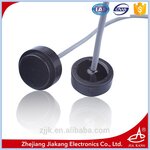Yadu
Newbie level 5
Application of the following sensor module.
Can any one tell me the application of the following sensr module? Can it be mounted on pipes and then measure the flow rate? Or is it a flow sensor that can just sense the flow when kept directly above flowing water??
The model no of the flow sensors are given below.
TL1000KA
**broken link removed**
TL1000KB http://www.chinaseniorsupplier.com/...r_Flow_Meters_Ultrasonic_Transducer_1MHz.html
Thanks in advance !
Can any one tell me the application of the following sensr module? Can it be mounted on pipes and then measure the flow rate? Or is it a flow sensor that can just sense the flow when kept directly above flowing water??
The model no of the flow sensors are given below.
TL1000KA
**broken link removed**
TL1000KB http://www.chinaseniorsupplier.com/...r_Flow_Meters_Ultrasonic_Transducer_1MHz.html
Thanks in advance !

